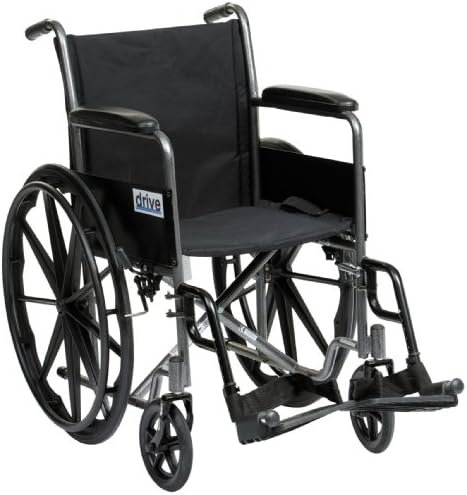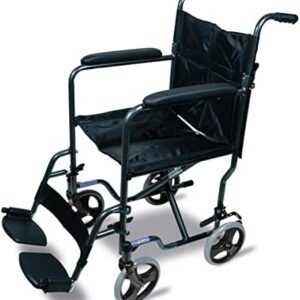Welcome to the ultimate guide on wheelchairs! Whether you’re considering a wheelchair for yourself, a loved one, or just curious to learn more, this article aims to provide a comprehensive overview. Wheelchairs are vital mobility aids for millions worldwide, enabling independence and mobility for those with mobility challenges. In this guide, we’ll explore the various types of wheelchairs, how to choose the right one, essential features to consider, maintenance tips, and much more.
Types of Wheelchairs
Manual Wheelchairs
Manual wheelchairs are self-propelled, typically by pushing on the wheels with hands. They are versatile, lightweight, and suitable for both indoor and outdoor use. Many manual wheelchairs also fold for easy transportation.
Electric Wheelchairs
Electric wheelchairs, also known as power wheelchairs, are motorized and controlled via a joystick or other devices. They offer excellent maneuverability and are ideal for individuals with limited upper body strength or dexterity.
Transport Wheelchairs
Transport wheelchairs are lightweight and designed for easy transport. They are often used for short trips, doctor visits, or outings, and are pushed by a caregiver or companion.
Pediatric Wheelchairs
Pediatric wheelchairs are specially designed for children. They come in various sizes and designs to ensure comfort and safety for young users.
Features to Consider When Choosing a Wheelchair
When selecting a wheelchair, several factors should be considered to ensure it meets the user’s needs and preferences:
- Seat Width and Depth: Proper seat dimensions are crucial for comfort and posture support.
- Weight Capacity: Wheelchairs have varying weight limits, so it’s essential to choose one that accommodates the user’s weight.
- Armrests and Footrests: Adjustable armrests and swing-away footrests enhance comfort and ease of use.
- Frame Material: Wheelchair frames can be made of aluminum, steel, or titanium, each with its advantages in terms of weight and durability.
- Wheel Size and Type: Larger wheels provide better outdoor mobility, while smaller wheels are more maneuverable indoors.
- Braking System: Wheelchairs may have manual or electric brakes, offering different levels of control and safety.
How to Choose the Right Wheelchair
Selecting the right wheelchair involves assessing the user’s needs, lifestyle, and preferences. Here are some steps to help with the decision-making process:
- Consultation: A consultation with a healthcare professional or physical therapist can provide valuable insights into the user’s specific requirements.
- Try Before You Buy: Whenever possible, test different wheelchairs to determine comfort, fit, and ease of use.
- Consider Lifestyle: Think about where the wheelchair will be used most often (indoors, outdoors, both) and the activities the user enjoys.
- Budget: Wheelchairs vary in price, so establishing a budget is essential. Remember to consider maintenance and accessories costs.
Wheelchair Maintenance Tips
Proper maintenance ensures the longevity and performance of a wheelchair. Here are some maintenance tips to keep in mind:
- Regular Cleaning: Wipe down the wheelchair frame, seat, and wheels regularly to prevent dirt buildup.
- Check Tires: Ensure tires are properly inflated and free of debris.
- Inspect Moving Parts: Regularly inspect brakes, footrests, and armrests for any signs of wear or damage.
- Battery Care: If using an electric wheelchair, follow manufacturer guidelines for battery maintenance and charging.
FAQs (Frequently Asked Questions)
- How do I know which wheelchair is right for me? Choosing the right wheelchair depends on factors such as mobility needs, lifestyle, and budget. Consulting with a healthcare professional or mobility expert can help determine the best option.
- Are wheelchairs covered by insurance? In many cases, wheelchairs may be covered by health insurance. It’s advisable to check with your insurance provider to understand coverage options.
- Can I customize my wheelchair for added comfort? Yes, many wheelchairs offer customization options such as seat cushions, backrests, and armrests to enhance comfort.
- What is the average lifespan of a wheelchair? The lifespan of a wheelchair varies based on usage, maintenance, and quality. On average, a well-maintained wheelchair can last several years.
- How often should I have my wheelchair serviced? Regular maintenance is crucial for wheelchair performance. It’s recommended to have a wheelchair serviced at least once a year, or more frequently if used daily.
- Can I travel with my wheelchair? Yes, many wheelchairs are designed for travel, with features like foldable frames and lightweight materials for easy transport.
Conclusion
In conclusion, wheelchairs are essential mobility aids that provide freedom and independence to individuals with mobility challenges. By understanding the types of wheelchairs available, key features to consider, and maintenance tips, you can make an informed decision when choosing a wheelchair. Remember, the right wheelchair can significantly improve quality of life and enhance daily experiences.
Wheelchairs empower individuals to navigate the world with confidence and ease, ensuring access to various environments and activities. Whether it’s a manual wheelchair for everyday use or an electric wheelchair for added mobility, there’s a wheelchair suited to every need and lifestyle.
Thank you for taking the time to explore the world of wheelchairs with us!



